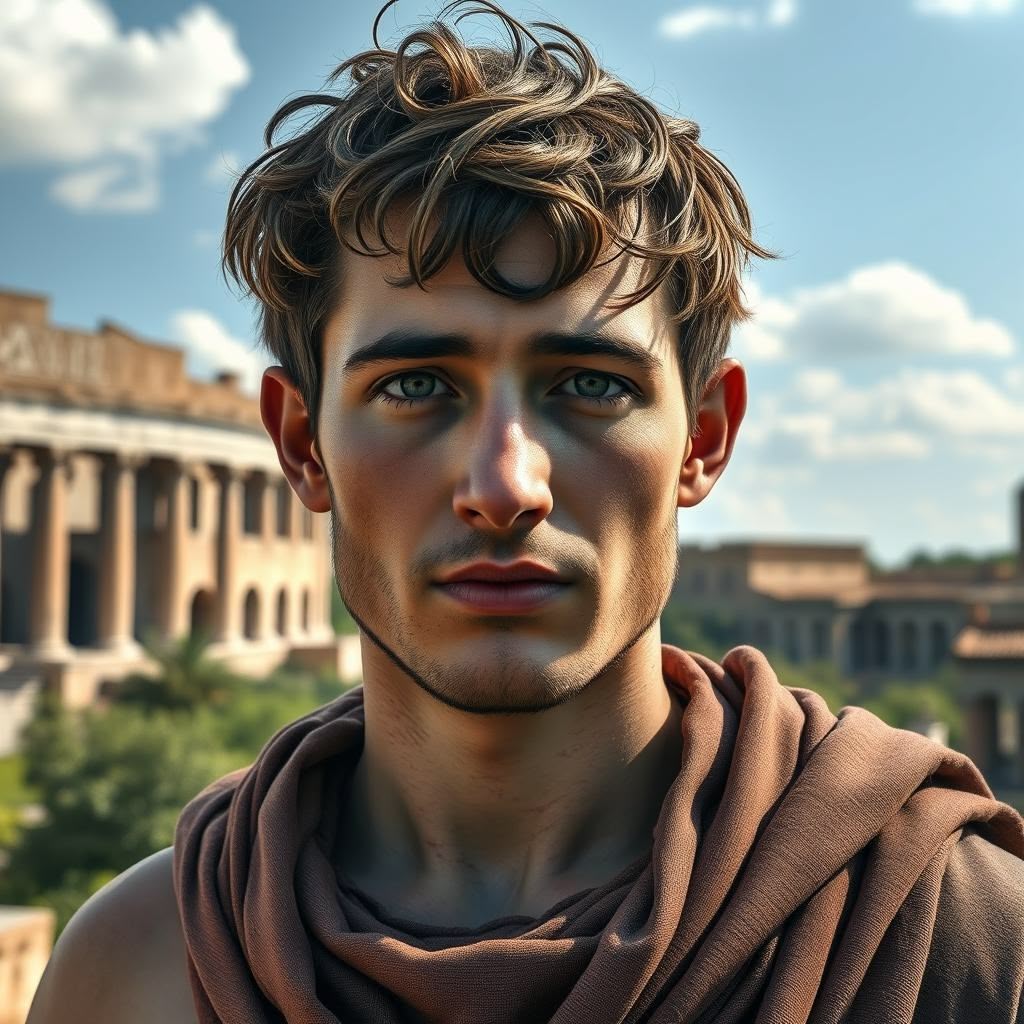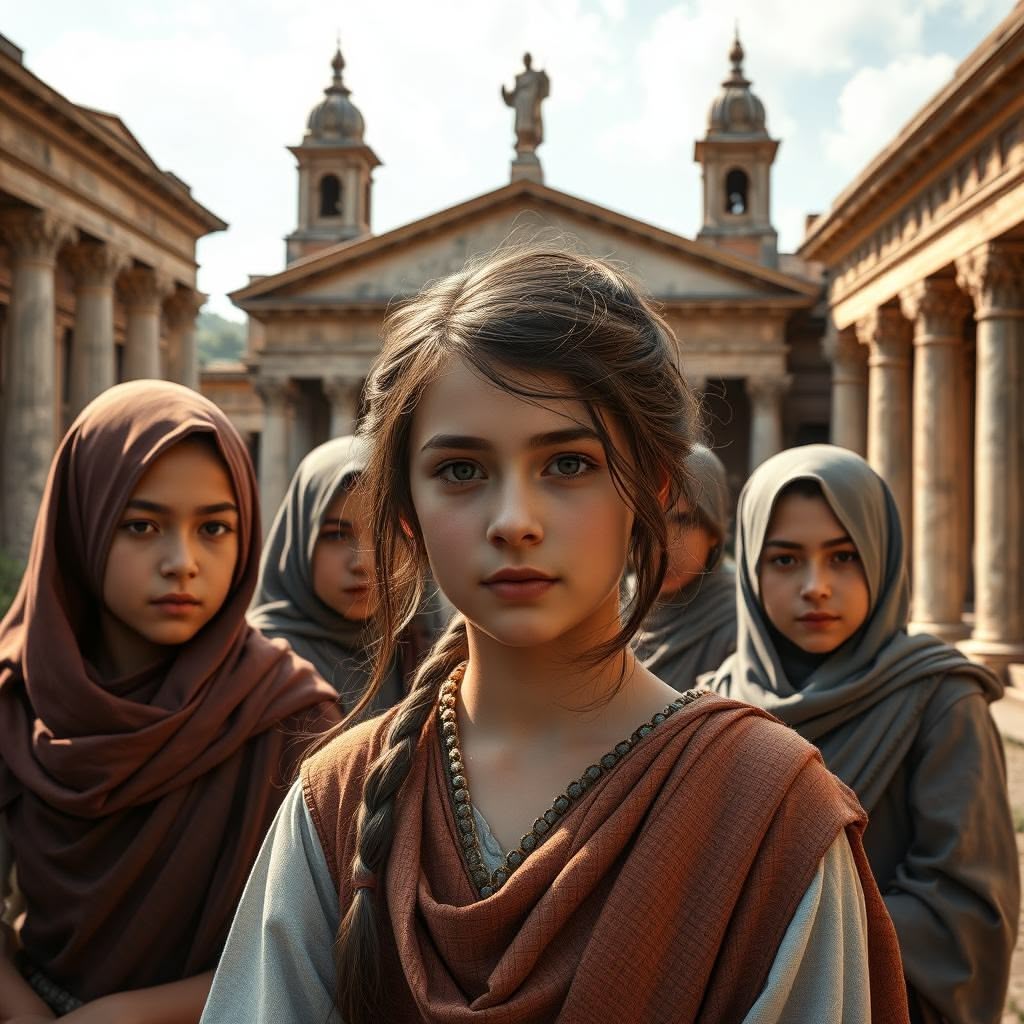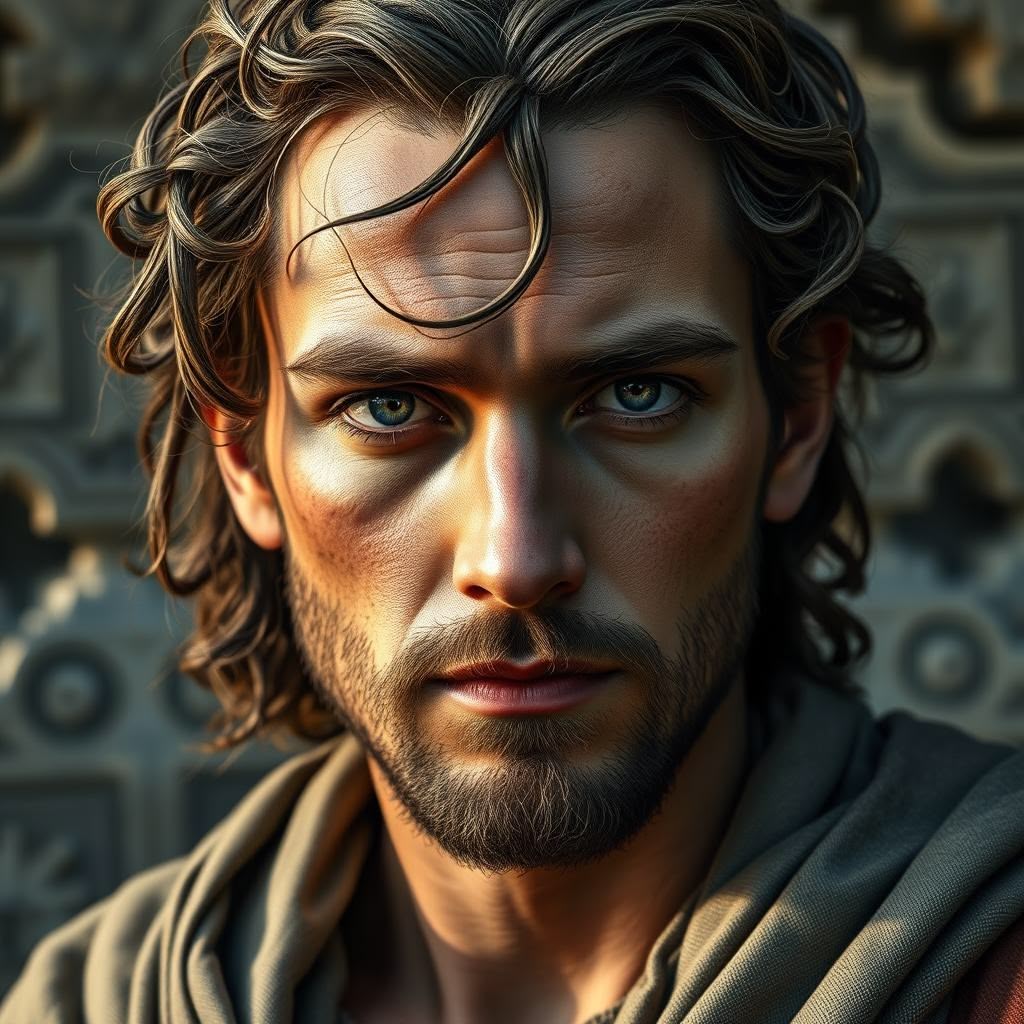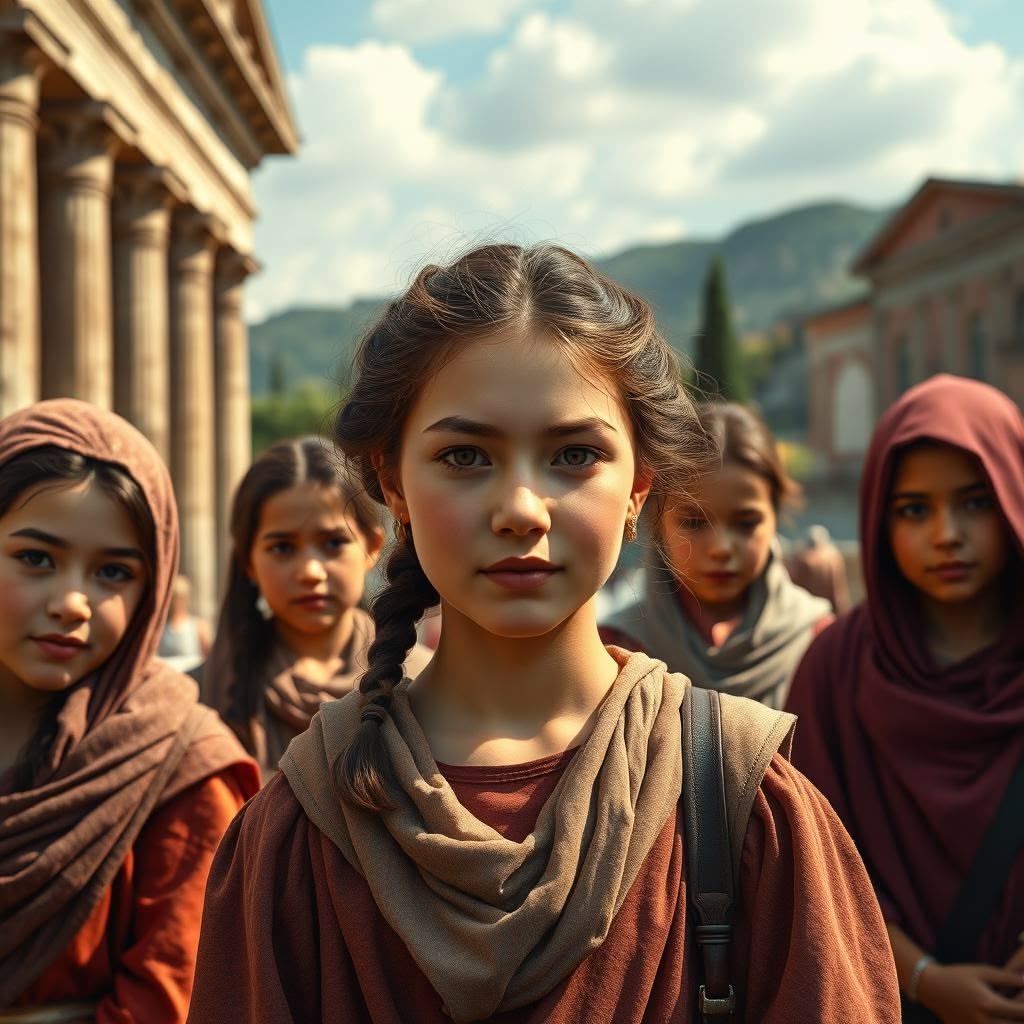The hallways of America’s public schools echo with a troubling reality. Test scores plummeting. Teacher burnout escalating. Student engagement evaporating. The educational foundation upon which our society depends is cracking under immense pressure. According to the National Assessment of Educational Progress, only 37% of American fourth-graders are proficient in reading, while just 40% demonstrate proficiency in mathematics. These statistics aren’t merely numbers—they represent millions of children whose futures hang in precarious balance.
As we search desperately for solutions, perhaps we’re looking in the wrong direction. Instead of chasing the next technological innovation or curriculum overhaul, what if the answers we seek have existed for over two millennia? What if Ancient Rome—a civilization that produced some of history’s greatest thinkers, leaders, and innovators—already perfected educational methods that address our most pressing educational challenges?
The Roman approach to education wasn’t just effective—it was transformative. It shaped citizens who could think critically, communicate persuasively, and contribute meaningfully to society. Their educational philosophy wasn’t built on standardized testing or rigid grade levels but on developing the whole person through practical skills, moral development, and civic responsibility.
Today’s educational landscape bears little resemblance to these Roman ideals. Our students memorize facts for exams only to forget them days later. They move through an assembly line of disconnected subjects with little understanding of how this knowledge applies to real life. They graduate with diplomas but often lack the fundamental skills needed for career success or civic participation.

Practical Knowledge: The Roman Commitment to Useful Learning
Roman education wasn’t conducted in a vacuum. Knowledge wasn’t pursued for its own sake but for its practical application in daily life. Young Romans didn’t just learn about geometry—they learned how to survey land, design aqueducts, and construct buildings. They didn’t merely study rhetoric as an academic exercise—they mastered it as a tool for civic participation, legal defense, and persuasive communication.
Compare this approach to today’s classrooms, where students frequently ask, “When will I ever use this?” This disconnection between education and application creates disengagement and undermines the learning process. Roman educational philosophy would remedy this fundamental flaw by contextualizing knowledge within real-world applications.
Dr. Katherine Phillips, Director of Classical Education at Templeton Academy, has implemented Roman-inspired practical learning approaches in her curriculum. “When we teach mathematics through actual building projects or literature through dramatic performance, we see engagement soar,” she explains. “Students retain information at dramatically higher rates when they can see its immediate relevance and application.”
The impact of this approach extends beyond academic achievement. Students develop problem-solving abilities and adaptability—skills modern employers consistently rank among their most desired traits in new hires. By reconnecting education with practical application, schools could simultaneously improve academic outcomes and workforce readiness.

The Lost Art of Rhetoric: Communication as the Foundation of Success
In Roman education, rhetoric—the art of effective speaking and persuasion—wasn’t an elective course; it was the cornerstone of a complete education. Students progressed through systematic training in articulating ideas, constructing arguments, and delivering speeches with confidence and authority. This rhetorical training developed not just communication skills but critical thinking, logical reasoning, and the ability to see multiple perspectives.
Today’s educational system has largely abandoned this emphasis on verbal communication. Students may graduate with minimal experience in public speaking, debate, or persuasive argument. This deficiency becomes painfully apparent when they enter workplaces or civic spaces where these skills are essential. According to the National Association of Colleges and Employers, communication skills consistently rank as the most desired qualification among employers, yet also one of the most common deficiencies in recent graduates.
Marcus Quintilian, the Roman educator whose “Institutes of Oratory” remains a definitive text on education, insisted that “the perfect orator is also the perfect man.” He understood that communication skills weren’t merely technical abilities but reflections of clear thinking, ethical reasoning, and personal character. By reviving the Roman emphasis on rhetoric, modern schools could address multiple educational objectives simultaneously.
Schools that have reintroduced classical rhetorical training report remarkable outcomes. At Classical Conversations, a network of classical education communities, students as young as twelve deliver memorized speeches and engage in formal debates. “These children develop a confidence and clarity of expression that’s rare among their peers,” notes founder Leigh Bortins. “More importantly, they learn to think logically and express themselves persuasively—skills that serve them regardless of their eventual career path.”

Citizenship Education: Learning for Civic Participation
Roman education was inseparable from citizenship development. Young Romans studied history not as a collection of dates and facts but as a source of moral examples and cautionary tales that informed their civic responsibilities. They analyzed the speeches of great statesmen, debated ethical dilemmas, and prepared for active participation in public life.
Our current educational approach has largely separated academic learning from civic development. Civics education has been marginalized in many curricula, reduced to memorizing government structures rather than developing the skills and dispositions of active citizenship. The consequences are evident in declining civic participation and increasing polarization. According to the Annenberg Public Policy Center, only 26% of Americans can name all three branches of government—a troubling statistic in a democracy that depends on informed citizen oversight.
The Roman approach offers a compelling alternative. By integrating citizenship development throughout the curriculum, schools can prepare students not just for careers but for meaningful participation in democratic society. History becomes relevant when students see its implications for current civic challenges. Literature becomes powerful when students analyze how it reflects and shapes cultural values. Mathematics becomes engaging when students apply it to understanding public policy problems.
Joseph Torsella, former U.S. Representative to the United Nations for Management and Reform, advocates for this integrated approach: “Education for citizenship isn’t about indoctrinating students with particular political views—it’s about equipping them with the knowledge, skills, and dispositions to participate effectively in civic life, regardless of their political orientation. The Romans understood this distinction perfectly.”

Mentor-Apprentice Relationships: The Power of Personalized Learning
Perhaps no aspect of Roman education contrasts more sharply with our current system than its reliance on mentor-apprentice relationships. Wealthy Roman families hired dedicated tutors for their children, while those of more modest means might apprentice their children to skilled practitioners. These one-on-one or small-group learning relationships allowed for personalized instruction, immediate feedback, and the transmission of not just knowledge but wisdom.
Today’s educational model places a single teacher before 25-35 students, making meaningful personalization nearly impossible. Teachers struggle to meet the diverse needs of their students while managing behavioral issues, administrative requirements, and standardized testing pressures. The result is an educational experience that fails to meet students where they are or adapt to their unique learning needs.
While returning to a purely mentor-based system isn’t feasible in our mass education context, elements of the Roman approach can be incorporated. Programs like Big Brothers Big Sisters have demonstrated the powerful impact of mentorship on educational outcomes. Schools that implement peer mentoring, community mentorship programs, or apprenticeship opportunities consistently report improvements in student engagement and achievement.
Dr. Robert Pondiscio, Senior Fellow at the American Enterprise Institute, notes: “The most effective educational interventions almost always involve building relationships. When students form meaningful connections with adults who can guide their learning and development, everything else in education becomes easier.” By creating more opportunities for mentorship within our educational systems, we can recapture this essential element of Roman educational success.

Integrated Physical Education: Developing Sound Minds in Sound Bodies
The Roman educational ideal—captured in the phrase “mens sana in corpore sano” (a sound mind in a sound body)—recognized the inseparable connection between physical and intellectual development. Physical training wasn’t relegated to a forty-minute period three times a week; it was integrated throughout the educational experience and continued into adulthood.
Our current approach could hardly be more different. Physical education programs face constant budget cuts, with only 4% of elementary schools, 8% of middle schools, and 2% of high schools providing daily physical education, according to the Centers for Disease Control and Prevention. Meanwhile, research consistently demonstrates that physical activity improves cognitive function, concentration, and academic performance.
The Roman model offers a compelling alternative. Rather than treating physical education as separate from academic learning, schools could integrate movement throughout the day. Some innovative schools have already begun this transition, incorporating standing desks, movement breaks, outdoor learning, and physical activities related to academic concepts.
Dr. John Ratey, Associate Clinical Professor of Psychiatry at Harvard Medical School and author of “Spark: The Revolutionary New Science of Exercise and the Brain,” explains: “Exercise creates the optimal conditions for learning. It increases the production of neurotransmitters that enhance focus, improves neuroplasticity, and reduces stress hormones that inhibit learning. The Romans intuitively understood what neuroscience now confirms—physical activity is essential for optimal cognitive function.”

Multilingual Literacy: Expanding Minds Through Language
In the Roman educational system, bilingualism was the norm rather than the exception. Educated Romans were expected to master both Latin and Greek, giving them access to the intellectual traditions of both cultures and developing cognitive flexibility that transferred to other domains. Language learning wasn’t treated as a separate subject but as a foundation for all learning.
Today’s American education system typically introduces foreign languages late, teaches them ineffectively, and treats them as peripheral to “core” subjects. Only 20% of American students study a foreign language, compared to 92% of European students. This monolingual approach limits students’ cultural understanding, cognitive development, and future opportunities in an increasingly global economy.
The Roman approach to language instruction offers several advantages for modern education. Research consistently shows that bilingual children demonstrate enhanced executive function, improved problem-solving abilities, and greater cognitive flexibility. These benefits extend beyond language acquisition to improve performance across academic domains.
Schools that have implemented dual-language immersion programs report remarkable results. Students in these programs typically outperform their peers not only in language proficiency but in mathematics, science, and reading in their native language. “When we teach children in two languages from an early age, we’re not just giving them an additional skill—we’re actually enhancing their cognitive architecture,” explains Dr. Elena Grigorenko, Professor of Psychology at the University of Houston and author of numerous studies on bilingualism and cognition.
Community Involvement in Education: Shared Responsibility for Learning
In Roman society, education wasn’t solely the responsibility of designated teachers. Parents, extended family, community leaders, and civic institutions all played vital roles in children’s development. Education extended beyond formal instruction to include participation in public events, religious ceremonies, family businesses, and civic activities.
Our current educational model has increasingly isolated schools from the communities they serve. Parents may have minimal involvement beyond occasional conferences or school events. Community resources remain untapped. Local wisdom and expertise rarely enter the classroom. This isolation deprives students of valuable learning opportunities and disconnects education from community needs and values.
The Roman model suggests a more integrated approach where education is a community-wide responsibility. Schools that embrace this philosophy create partnerships with local businesses, government agencies, nonprofit organizations, and community members. Students engage in service learning, community-based research, and apprenticeships that connect classroom learning with real-world applications.
Dr. James Comer, Professor of Child Psychiatry at Yale University’s Child Study Center, has pioneered approaches that reconnect schools with communities: “When schools, families, and communities align their efforts to support children’s development, we see improvements not just in academic achievement but in all aspects of children’s well-being. The most effective schools are those that function as hubs of community life and learning.”
A New Educational Renaissance Through Ancient Wisdom
Our current educational challenges—disengagement, irrelevance, fragmentation, standardization—aren’t inevitable. They’re the products of educational philosophies and structures that have gradually divorced learning from its practical applications, civic purposes, and human relationships. The Roman educational model offers a compelling alternative that addresses these fundamental flaws.
Imagine schools where students learn mathematics by designing and building actual structures. Envision classrooms where rhetoric and persuasive communication are taught as essential skills rather than specialized electives. Picture educational environments where mentorship, physical activity, multilingualism, and community involvement are woven throughout the educational experience rather than treated as add-ons or afterthoughts.
This vision isn’t utopian—it’s historical. These approaches worked for one of history’s most successful civilizations, producing citizens who built remarkable infrastructure, created enduring literature and art, developed sophisticated legal and political systems, and sustained a complex society for centuries.
The revival of Roman educational practices doesn’t require abandoning technology or modern knowledge. Rather, it means reconnecting with timeless principles about how humans learn most effectively: through practical application, meaningful relationships, integrated knowledge, civic engagement, and development of the whole person.
Educational reformer and classical education advocate Susan Wise Bauer puts it succinctly: “The Romans didn’t have some magical educational technique that we’ve lost. What they had was a clear understanding of education’s purpose—to develop virtuous citizens capable of independent thought and meaningful contribution. When we lose sight of that purpose, no pedagogical innovation can save us.”
As we confront the limitations of our current educational system, perhaps it’s time to look back in order to move forward. The educational practices that transformed young Romans into capable, articulate, engaged citizens aren’t merely historical curiosities—they’re proven approaches that address our most pressing educational challenges. By reviving these timeless methods, we might just ignite a new renaissance in education—one that prepares students not just for tests, but for life.

